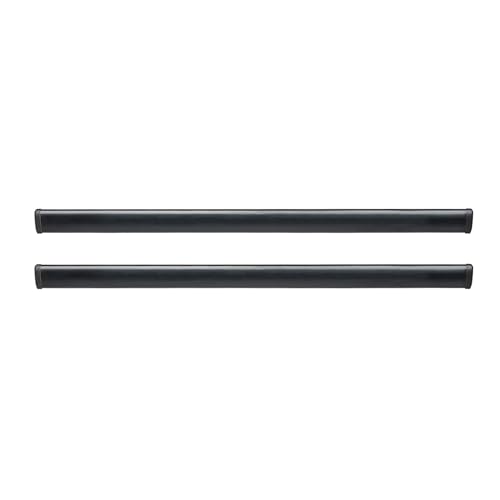A good universal roof rack opens up all kinds of possibilities—road trips, ski weekends, moving day, spontaneous gear-hauling. But the term “universal” can be misleading. Not all racks play nicely with all cars, and some are far more adaptable than others. Whether you’re driving a compact hatchback, a family SUV, or something in between, this guide focuses on truly flexible, well-built roof racks you can count on for a variety of vehicles and uses.
So how do you separate the junky generic bars from the genuinely versatile, road-tested gear haulers? That’s what we’re here to figure out.
What to Know Up Front
Universal doesn’t mean one-size-fits-all.
Most so-called universal roof racks are designed to fit a range of vehicle roof types—especially raised rails or bare roofs—but they still come with limitations. You’ll need to check your vehicle’s specific roof width, rail type (if any), and crossbar spread to ensure compatibility.
Also, some racks are better suited for long-term mounting and frequent gear use (think roof boxes or kayak racks), while others are ideal for occasional hauling. The racks we recommend below all offer solid flexibility, decent aerodynamics, and strong value for the price.
So, What Should You Buy?
If you’re looking for an easy, adaptable, and solidly built roof rack that fits a wide range of vehicles and gear, start with one of these top picks:
Best Overall Universal Roof Rack
Our Top Pick
Best Premium Option
Best for Bare Roofs
Best Budget Pick
Best for SUVs
A Focused Buyer’s Guide to Universal Roof Racks
Roof Type Compatibility
This is your starting point. Does your vehicle have raised side rails, flush rails, fixed mounting points, or a bare roof? Universal racks tend to be most compatible with raised side rails. Models for bare roofs often require clamp systems that must match the contour of your door frame. Flush rails and fixed points require a more specific fit kit, so check carefully.
Bar Shape and Aerodynamics
Gone are the days of clunky square bars as your only option. Today, aero-style crossbars dominate for good reason. They’re quieter, cause less drag, and tend to look better too. Look for bars that include features like wind-diffusing strips or tapered edges—especially if you plan to keep the rack on full-time.
Build Materials and Durability
You want something that can handle rough weather and occasional abuse without rusting out. Aluminum is ideal: it’s rust-resistant and light. Steel is strong but prone to corrosion if not properly treated. Pay attention to the quality of the foot mounts and clamps too—that’s often where budget racks cut corners.
Load Ratings and Safety
It’s not just about how much weight the bars can take, but what your roof can handle too. Double-check both:
- The rack’s load capacity (usually 100–150 lbs)
- Your vehicle’s roof load limit (from the owner’s manual)
Also consider how the load is distributed. Keep heavy items low and centered to reduce stress and wind resistance.
Rack Height and Clearance
It’s easy to overlook this until you slam into a parking garage beam. Most racks add 2 to 5 inches to your roof height. Add a cargo box or basket on top, and you’re suddenly pushing 7 to 12 inches of extra height. Always consider your total height clearance if you park indoors or travel under low bridges.
Locking and Theft Prevention
Even basic racks should include at least one locking mechanism—either to the vehicle or between the bars and accessories. If not included, you can add third-party locks, but check compatibility. If you plan on keeping expensive items on top, like skis or a pricey cargo box, don’t skimp on this.
Versatility with Accessories
You might only need the bars now, but down the line? Maybe a bike rack. A roof basket. A cargo pod. Choose a system that supports T-track mounting or has a wide enough crossbar profile to fit popular mounts. Some systems lock you into their own ecosystem—others give you more freedom.
Ease of Installation and Removal
Some systems go on in 10 minutes with a turn of a knob. Others need an hour, a YouTube tutorial, and maybe a second pair of hands. If you plan to leave the rack on full-time, installation might not matter. But if you’re taking it on and off regularly, simplicity matters a lot more than you’d think.
Final Thoughts
A universal roof rack isn’t just a piece of gear—it’s an invitation to do more with your vehicle. Whether you’re hauling skis, bikes, or extra cargo, the right setup should work with your car, not against it. You want something that’s solid, easy to use, and future-proof enough to handle whatever adventure or errand is next.
Cheap racks may save you a buck upfront, but often bring headaches later. Spend a little more now, and you’ll get something quieter, sturdier, and less likely to fail mid-trip. And always double-check fit—even the best universal rack won’t help if it doesn’t fit your car properly.
Frequently Asked Questions
Willem is an avid mountain biker and outdoor sports enthusiast. For years, he has been riding mountain bike stage races, including the grueling Cape Epic. As a father of three adventurous kids, he knows about packing a vehicle to haul his gear safely and responsibly from home to any exciting weekend or holiday destination.




